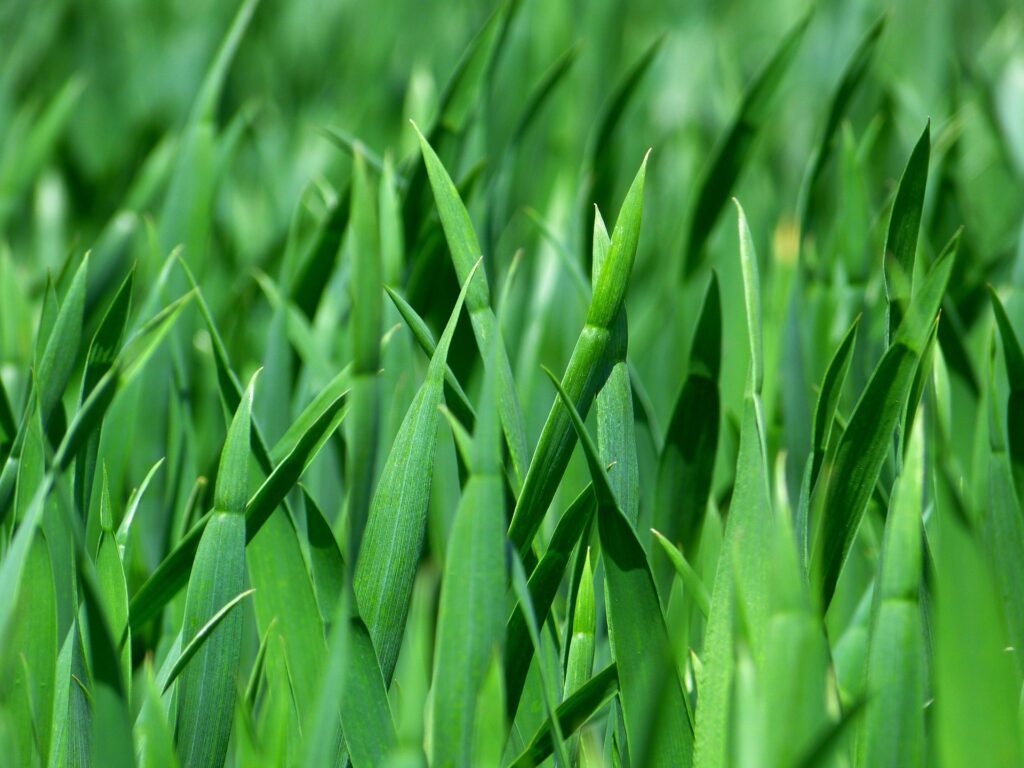Discover How to Identify & Eliminate These Lawn Pests
At first glance, your yard may appear healthy and vibrant. But beneath those green blades, a silent invasion could be underway. Hairy chinch bugs. Nearly invisible to the naked eye, they can destroy your cool-season grass without any obvious warning signs.
These miniature terrors rank among Ohio and Michigan’s most damaging lawn pests. They literally drain the health from each blade, creating expanding dead zones that can quickly overtake your entire lawn.
Seeing unusual yellowing or brown areas that stay parched despite regular watering? Chinch bugs are likely the offenders. Ready to outsmart these annoying insects? Read on to find out about:
- Spotting chinch bugs (they’re smaller than you think)
- Recognizing the telltale damage patterns
- Expert-approved prevention techniques
- Battle-tested elimination strategies
What Are Chinch Bugs?
Don’t let their size trick you. These destructive pests pack a powerful punch. Measuring just 1/5-inch at maturity (smaller than a pencil eraser), chinch bugs often go unnoticed until significant damage appears.
Here’s how these insects operate: They use needle-like mouthparts to pierce grass blades, simultaneously draining vital plant fluids and injecting a poisonous enzyme that blocks water uptake.
This lethal combination creates a rapid decline in turf health that can spiral out of control if left untreated.

Hairy Chinch Bug Profile for Northern Homeowners
- Identification:
- Adults: Jet black with distinctive white wings
- Nymphs: Bright red/pink with white banding
- Size: Comparable to a sesame seed (1/16″ to 1/5″)
- Reproduction & Activity:
- Single females produce 200-500 eggs per season
- Early spring emergence (April sightings common)
- Peak destruction occurs May-August
- Environmental Preferences:
- Thrive in hot, dry conditions
- Target stressed lawns first
- Can infiltrate even well-maintained turf
Proper irrigation helps deter infestations, but we’ve treated numerous cases where chinch bugs invaded seemingly healthy lawns across Michigan and Ohio’s neighborhoods. Early detection is critical! The damage you see today actually began weeks ago.
Do I Have Chinch Bugs In My Yard?
Many homeowners mistake chinch bug destruction for common lawn issues. As turf professionals, we’ve developed reliable methods to distinguish these pests from other problems.
1. The Progression of Destruction
Yellowish streaks in grass blades become bronze-colored patches, then large dead zones with crisp, straw-like grass. This usually starts along concrete edges (driveways, walkways) and sun-exposed areas.
2. The Water Test
Healthy drought-stressed grass revives within 24 hours of watering. However, chinch-damaged turf shows zero improvement. Pro tip: Mark test areas with flags to monitor changes.
3. The Can Test
Use a soup or coffee metal can with both ends removed. Insert 3 inches deep at the damaged perimeter. Fill with water and 1 tsp dish soap (breaks surface tension). Check at 5-minute intervals. See if bugs float to the surface.
4. The Odor Indicator
Chinch bugs have a nasty”stink bug” smell when disturbed, which is most noticeable on hot afternoons. So try a walking test. Simply step and sniff around your yard since rushed bugs release a stronger scent.
5. The Magnification Method
Part grass at the transition zone (green to brown). Use 10x magnification for easier chinch bug detection. You may see these pests scattering when disturbed.
How Can I Prevent Hairy Chinch Bugs?
Prevention is always a strong tactic in lawn care services and pest control. Here’s how to make your cool-season lawn less appealing to hairy chinch bugs in particular:
Lawn Care Best Practices
- Mow High: Keep grass at 3–4 inches to promote deep roots.
- Water Deeply: Aim for 1–1.5 inches per week. Early morning is often the best time.
- Dethatch Regularly: Thatch over 0.5 inches thick attracts chinch bugs.
- Avoid Over-Fertilizing: Too much nitrogen makes grass a pest magnet.
Also, you should avoid these three common mistakes that many northern homeowners in the greater Tampa community make:
1. Overwatering. The more water, the better, right? Wrong. Too much water can create fungal issues.
2. Scalping your lawn. Cutting your grass too short weakens it.
3. Using broad-spectrum insecticides. This will kill beneficial insects (ladybugs, lacewings, and ground beetles) that actually eat chinch bugs.

How Do I Get Rid of Chinch Bugs?
So, you’ve confirmed that chinch bugs are present in your Michigan or Ohio yard. Now what? It’s important to act fast because chinch bugs multiply quickly.
1. Natural Treatments
- Neem oil: This disrupts their life cycle, but it’s key to spray it in the early morning or evening.
- Insecticidal soap: It’s effective on nymphs, but must contact the bugs directly.
- Diatomaceous earth: This eco-friendly powder can dehydrate and kill chinch bugs.
2. Chemical Insecticides
Applying bifenthrin or cyfluthrin in the early morning (when pests are active) can help against chinch bugs. But be sure to always follow label instructions to avoid harming pollinators and beneficial insects.
3. Professional Lawn Care Services
The most effective option when dealing with chinch bugs? Call a professional lawn care and pest control service like NexGreen! We can:
- Accurately assess infestation levels
- Apply targeted treatments
- Provide long-term prevention plans
Keep Your Lawn Safe!
They aren’t big, but chinch bugs can wreak havoc. Early detection and prevention are key to keeping your lawn healthy through the summer.
If you think chinch bugs are destroying your grass, don’t wait. Contact NexGreen today!
We offer lawn care services in Ohio communities around the areas of Westerville, OH and Columbus, OH. We also provide pest control and lawn care services in Michigan for areas near Sterling Heights, MI and Rochester Mills, MI.

